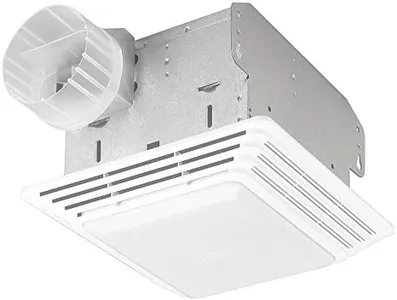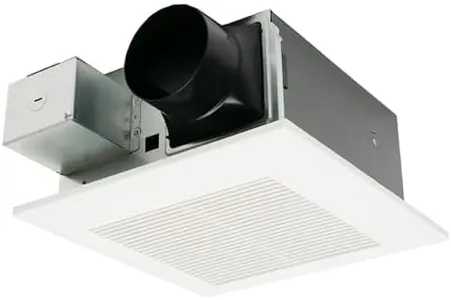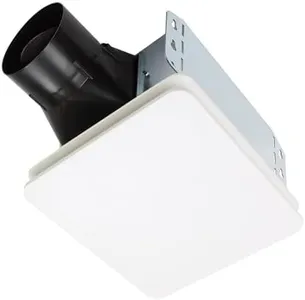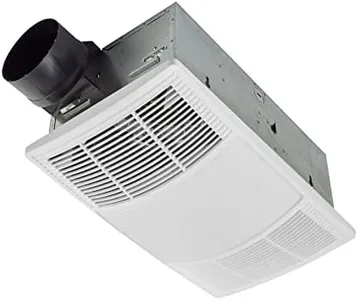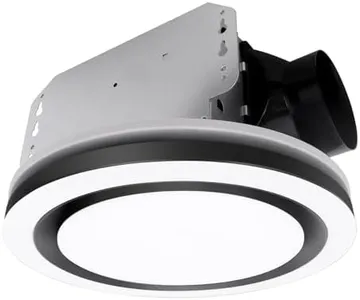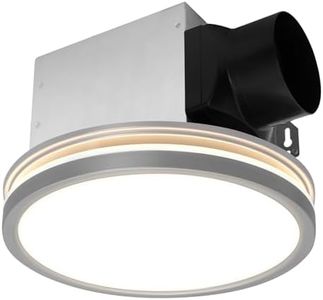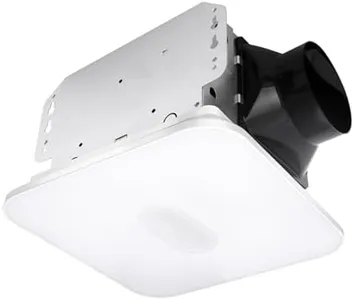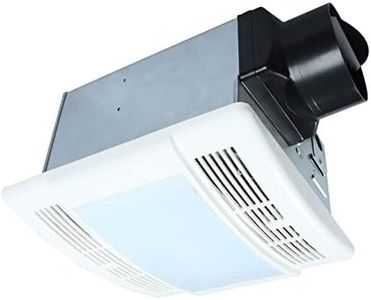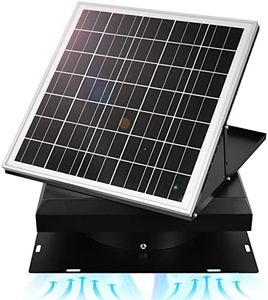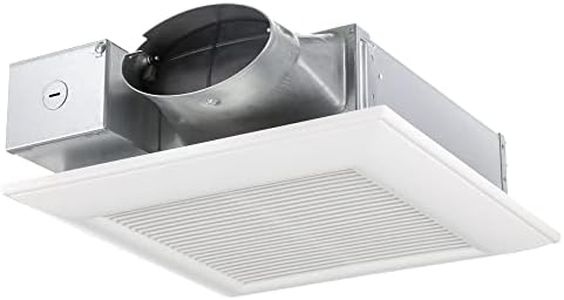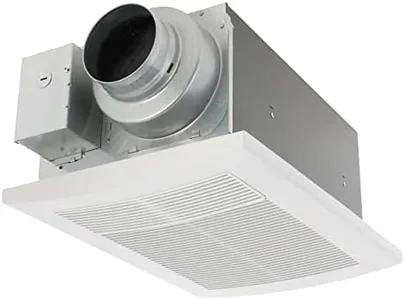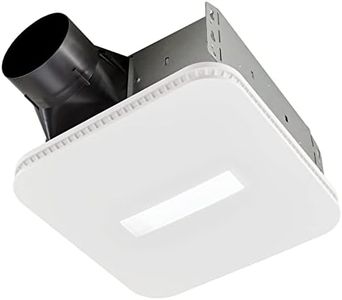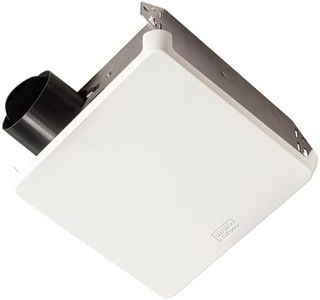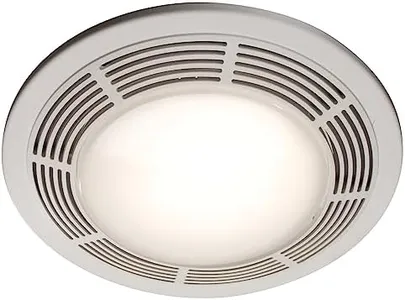10 Best Bathroom Exhaust Fans 2025 in the United States
Our technology thoroughly searches through the online shopping world, reviewing hundreds of sites. We then process and analyze this information, updating in real-time to bring you the latest top-rated products. This way, you always get the best and most current options available.

Our Top Picks
Winner
Broan-NuTone 678 Ventilation Fan and Light Combo for Bathroom and Home, 100 Watts, 50 CFM,White
Most important from
10081 reviews
The Broan-NuTone 678 Ventilation Fan and Light Combo is designed for small to medium-sized bathrooms up to 45 square feet. With an airflow capacity of 50 CFM, it effectively ventilates smaller rooms but may not be sufficient for larger spaces. At 2.5 sones, the noise level is moderate, meaning it isn't the quietest option available but should be tolerable for most users.
The fan includes a bright 100-watt light (bulb not included), which can help brighten your bathroom, and the shatter-resistant light diffusing lens adds durability. However, it uses incandescent lighting, which is less energy-efficient compared to modern LED options. Installation is made easier for DIY enthusiasts with included polymeric duct connectors and a plug-in motor, but professional installation might still be preferred by some users.
The unit has a simple, white polymeric grille that blends with most bathroom decors, but some may find it lacks the aesthetic appeal of more modern designs. This product is best suited for users looking for a reliable, moderately quiet ventilation fan and light combo for a small bathroom or similar space.
Most important from
10081 reviews
Panasonic FV-0511VF1 WhisperFit DC Fan 50-80-110 CFM Retrofit Bathroom Exhaust Fan - Quiet Energy Star-Certified Energy-Saving Bathroom Ceiling Fan
Most important from
1210 reviews
The Panasonic FV-0511VF1 WhisperFit DC Fan is a solid choice for anyone looking to improve ventilation in their bathroom. One of its standout features is the adjustable airflow selector that lets you choose between 50, 80, or 110 CFM, making it versatile enough for various bathroom sizes. With a noise level of just 25 dB, it operates quietly, which is a significant advantage if you prefer a peaceful environment.
Energy efficiency is another strong point, as this fan is Energy Star-certified, helping you save on electricity costs while maintaining effective ventilation. Its compact design with a depth of only 5.6 inches means it can fit in smaller spaces, and the installation is straightforward thanks to the Flex-Z Fast bracket that simplifies the mounting process.
There are some considerations to keep in mind. While the manual control for airflow is functional, some users may prefer a more automated system. The absence of additional features like built-in lighting might also be a drawback for those looking for a fan that serves multiple purposes. Additionally, it comes with a corded electric setup, which means it needs to be connected to an outlet, limiting placement options.
Most important from
1210 reviews
Broan-NuTone® BE8 Bathroom Exhaust Fan, 80 CFM, ENERGY STAR® Exhaust Fan, 1.5 Sones
Most important from
9844 reviews
The Broan-NuTone BE8 Bathroom Exhaust Fan is a solid choice for small bathrooms up to 75 square feet. It boasts an airflow capacity of 80 CFM, which effectively helps in reducing moisture and odors. With a noise level of 1.5 sones, it operates quietly, ensuring a peaceful bathroom environment without the distraction of a loud fan. This fan is also ENERGY STAR certified, indicating high energy efficiency and lower energy consumption—about 50% less than standard bath fans, making it environmentally friendly and cost-effective over time.
Installation is straightforward and can be achieved without cutting drywall, thanks to the no cut roomside installation feature. The innovative SlideClip technology allows for easy fitting and cleaning of the grille. The fan’s sleek and modern design with a floating CleanCover grille blends seamlessly with most bathroom ceilings, adding aesthetic appeal. Weighing in at 6.19 pounds, it is lightweight and easy to handle during installation.
However, for larger bathrooms, this fan may not suffice due to its limited coverage. Additionally, while the fan’s noise level is low, some users may still find it slightly audible. Despite these minor drawbacks, the Broan-NuTone BE8 is an excellent choice for those looking for a quiet, energy-efficient, and easy-to-install bathroom exhaust fan for smaller spaces.
Most important from
9844 reviews
Buying Guide for the Best Bathroom Exhaust Fans
Choosing the right bathroom exhaust fan is essential for maintaining good air quality and preventing moisture-related issues like mold and mildew. A well-chosen exhaust fan can help keep your bathroom fresh and comfortable. When selecting a bathroom exhaust fan, consider the following key specifications to ensure you get the best fit for your needs.FAQ
Most Popular Categories Right Now
